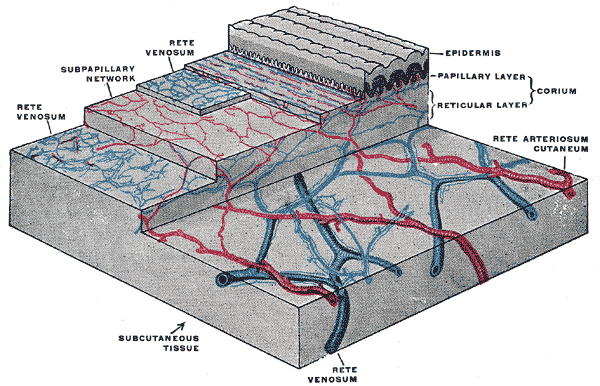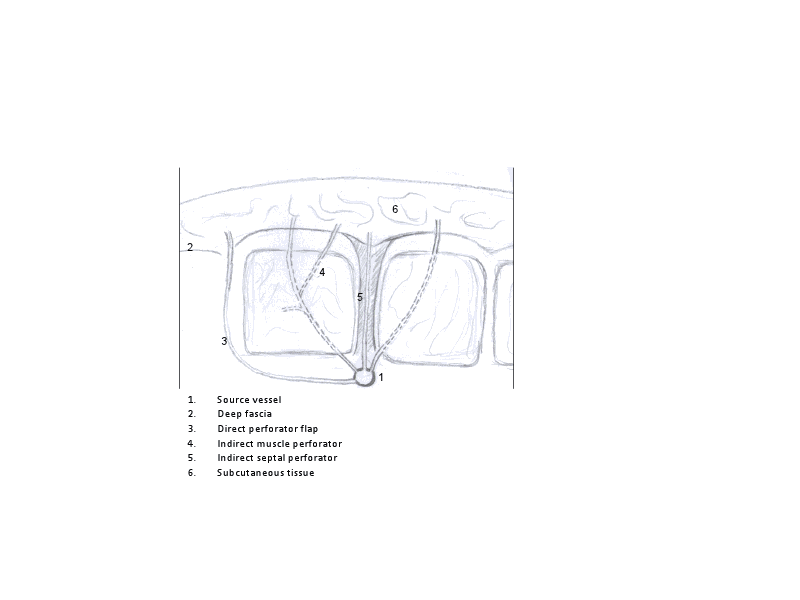|
Rotation Flap
A rotation flap is a semicircular skin flap that is rotated into the defect on a fulcrum point. Rotation flaps provide the ability to mobilize large areas of tissue with a wide vascular base for reconstruction. The flap must be adequately large, and a large base is necessary if a back-cut will be needed to lengthen the flap. If the flap is too small, the residual defect can be covered by mobilizing the surrounding tissue. A drawback of rotation flaps is the extended cutting and undermining needed to create the flap, thus increasing the risk of hemorrhage and nerve damage. This term is often used in contrast with the term " free flap" where the transferred tissue is completely detached. References * See also *Flap (surgery) Flap surgery is a technique in plastic and reconstructive surgery where any type of tissue is lifted from a donor site and moved to a recipient site with an intact blood supply. This is distinct from a graft, which does not have an intact blood ... * ... [...More Info...] [...Related Items...] OR: [Wikipedia] [Google] [Baidu] |
Fulcrum Point
A fulcrum is the support about which a lever pivots. Fulcrum may also refer to: Companies and organizations * Fulcrum (Anglican think tank), a Church of England think tank * Fulcrum Press, a British publisher of poetry * Fulcrum Wheels, a bicycle wheel manufacturer in Italy Entertainment * ''Fulcrum'' (annual), a United States literary periodical * Fulcrum (''Chuck''), the enemy spy organization on the TV series ''Chuck'' * ''Fulcrum'' (newspaper), a student newspaper at the University of Ottawa * ''Fulcrum'' (sculpture), a 1987 sculpture in London by Richard Serra * The Fulcrum (comics), a supreme being in the Marvel Comics universe * Ahsoka Tano, a character in the animated series ''Star Wars Rebels'' who uses the alias Fulcrum ** Agent Alexsandr Kallus, a character from the same series who took the alias Fulcrum after Ahsoka Tano. Other * Fulcrum (Antarctica), a geological formation in Antarctica * Fulcrum (drumming), part of a percussionist's grip * Fulcrum weeder, a gar ... [...More Info...] [...Related Items...] OR: [Wikipedia] [Google] [Baidu] |
Hemorrhage
Bleeding, hemorrhage, haemorrhage or blood loss, is blood escaping from the circulatory system from damaged blood vessels. Bleeding can occur internally, or externally either through a natural opening such as the mouth, nose, ear, urethra, vagina or anus, or through a puncture in the skin. Hypovolemia is a massive decrease in blood volume, and death by excessive loss of blood is referred to as exsanguination. Typically, a healthy person can endure a loss of 10–15% of the total blood volume without serious medical difficulties (by comparison, blood donation typically takes 8–10% of the donor's blood volume). The stopping or controlling of bleeding is called hemostasis and is an important part of both first aid and surgery. Types * Upper head ** Intracranial hemorrhage – bleeding in the skull. ** Cerebral hemorrhage – a type of intracranial hemorrhage, bleeding within the brain tissue itself. ** Intracerebral hemorrhage – bleeding in the brain caused by the ruptu ... [...More Info...] [...Related Items...] OR: [Wikipedia] [Google] [Baidu] |
Nerve Damage
Nerve injury is an injury to nervous tissue. There is no single classification system that can describe all the many variations of nerve injuries. In 1941, Seddon introduced a classification of nerve injuries based on three main types of nerve fiber injury and whether there is continuity of the nerve. Usually, however, peripheral nerve injuries are classified in five stages, based on the extent of damage to both the nerve and the surrounding connective tissue, since supporting glial cells may be involved. Unlike in the central nervous system, neuroregeneration in the peripheral nervous system is possible. The processes that occur in peripheral regeneration can be divided into the following major events: Wallerian degeneration, axon regeneration/growth, and reinnervation of nervous tissue. The events that occur in peripheral regeneration occur with respect to the axis of the nerve injury. The proximal stump refers to the end of the injured neuron that is still attached to the ne ... [...More Info...] [...Related Items...] OR: [Wikipedia] [Google] [Baidu] |
Flap (surgery)
Flap surgery is a technique in plastic and reconstructive surgery where any type of tissue is lifted from a donor site and moved to a recipient site with an intact blood supply. This is distinct from a graft, which does not have an intact blood supply and therefore relies on growth of new blood vessels. This is done to fill a defect such as a wound resulting from injury or surgery when the remaining tissue is unable to support a graft, or to rebuild more complex anatomic structures such as breast or jaw. Uses Flap surgery is a technique essential to plastic and reconstructive Surgery. A flap is defined as a tissue that can be moved to another site and has its own blood supply. This is in comparison to a skin graft which does not have its own blood supply and relies on vascularization from the recipient site. Flaps have many uses in wound healing and are used when wounds are large, complex, or need tissue and bulk for successful closure. Common uses: * Abdominal wall recons ... [...More Info...] [...Related Items...] OR: [Wikipedia] [Google] [Baidu] |
Perforator Flaps
Perforator flap surgery is a technique used in reconstructive surgery where skin and/or subcutaneous fat are removed from a distant or adjacent part of the body to reconstruct the excised part. The vessels that supply blood to the flap are isolated perforator(s) derived from a deep vascular system through the underlying muscle or intermuscular septa. Some perforators can have a mixed septal and intramuscular course before reaching the skin. The name of the particular flap is retrieved from its perforator and not from the underlying muscle. If there is a potential to harvest multiple perforator flaps from one vessel, the name of each flap is based on its anatomical region or muscle. For example, a perforator that only traverses through the septum to supply the underlying skin is called a septal perforator. Whereas a flap that is vascularised by a perforator traversing only through muscle to supply the underlying skin is called a muscle perforator. According to the distinct origin of ... [...More Info...] [...Related Items...] OR: [Wikipedia] [Google] [Baidu] |
List Of Plastic Surgery Flaps
Below is a list of common and eponymous plastic surgery flaps with their classification and common usage. ''(NB - the terms interpolation flap and pedicle flap can be used interchangeably.)'' List of flaps See also * Flap (surgery) * Perforator flaps Perforator flap surgery is a technique used in reconstructive surgery where skin and/or subcutaneous fat are removed from a distant or adjacent part of the body to reconstruct the excised part. The vessels that supply blood to the flap are isolated ... References {{Skin and subcutaneous tissue procedures , state=collapsed Plastic surgical procedures ... [...More Info...] [...Related Items...] OR: [Wikipedia] [Google] [Baidu] |



